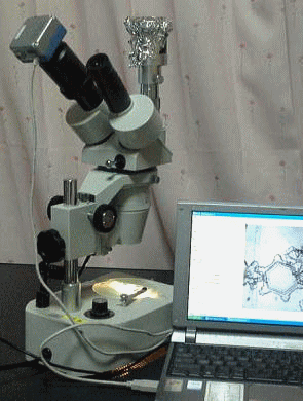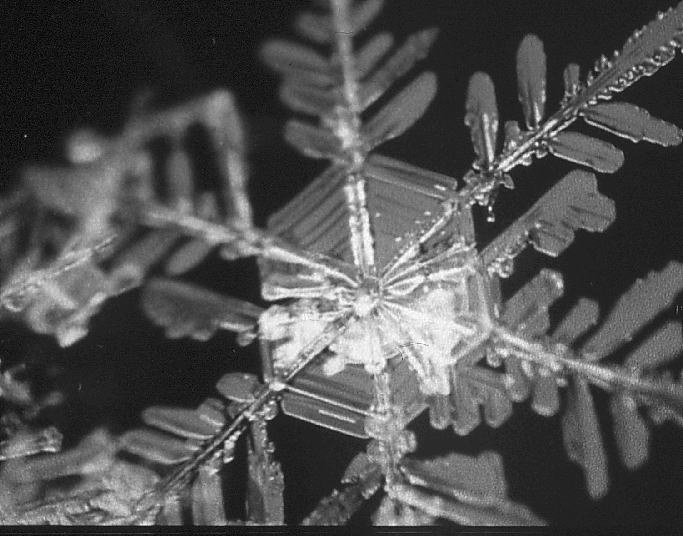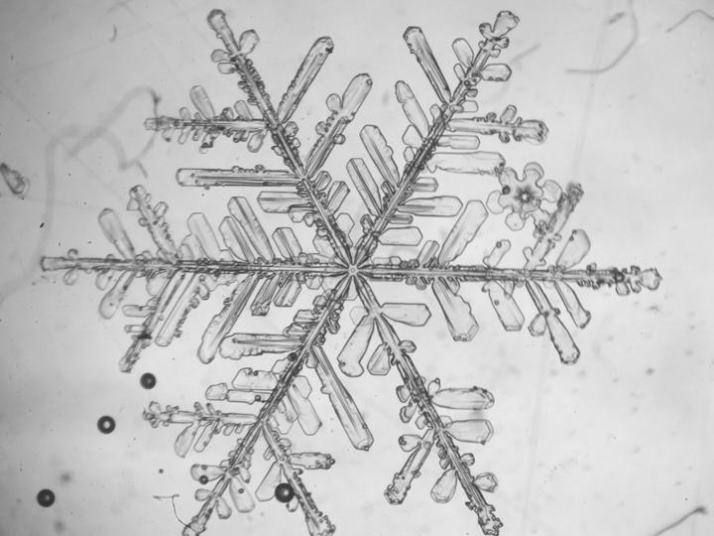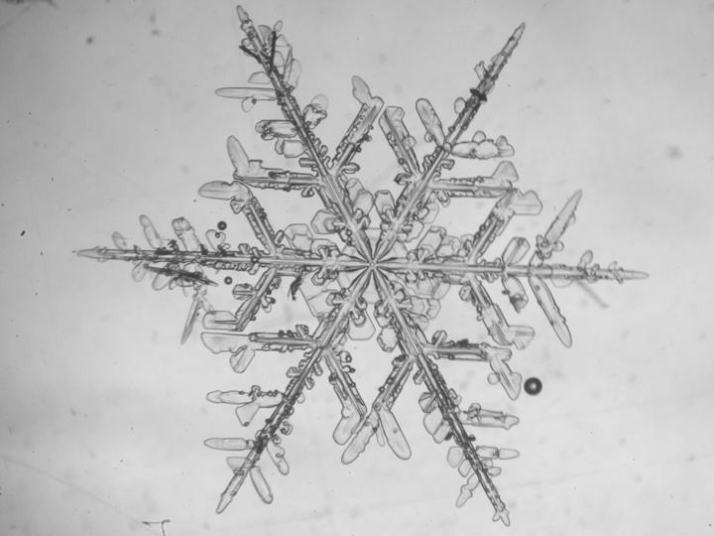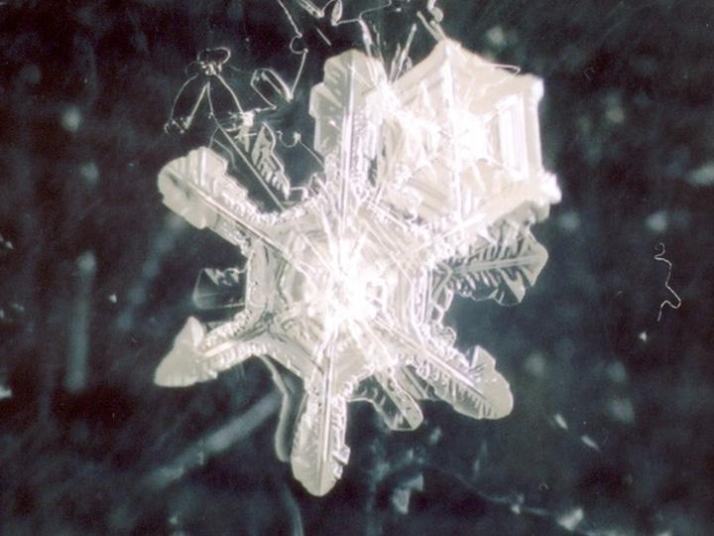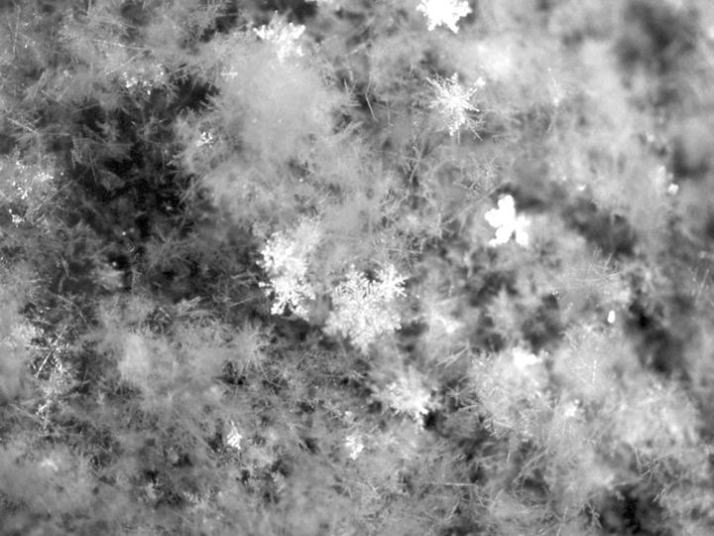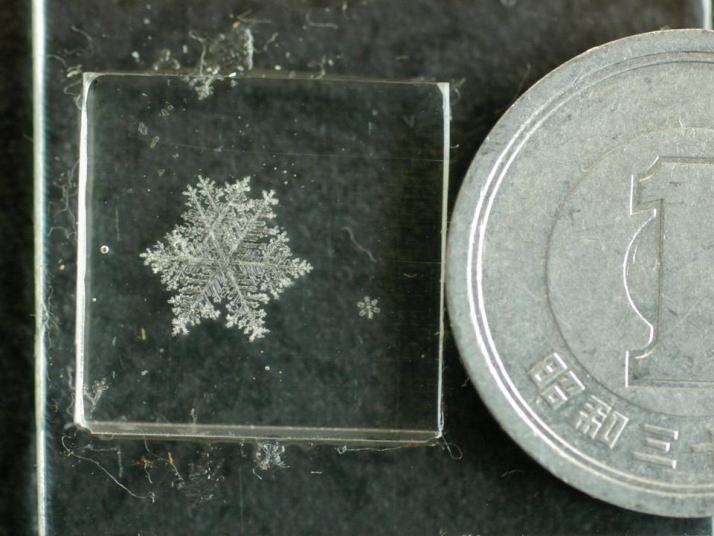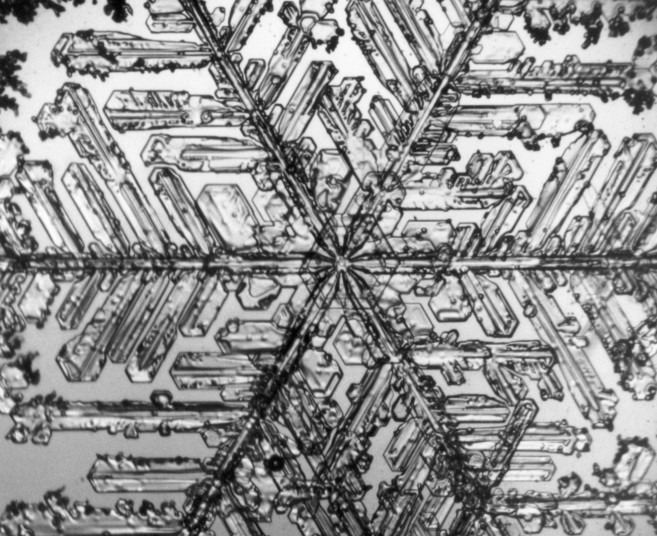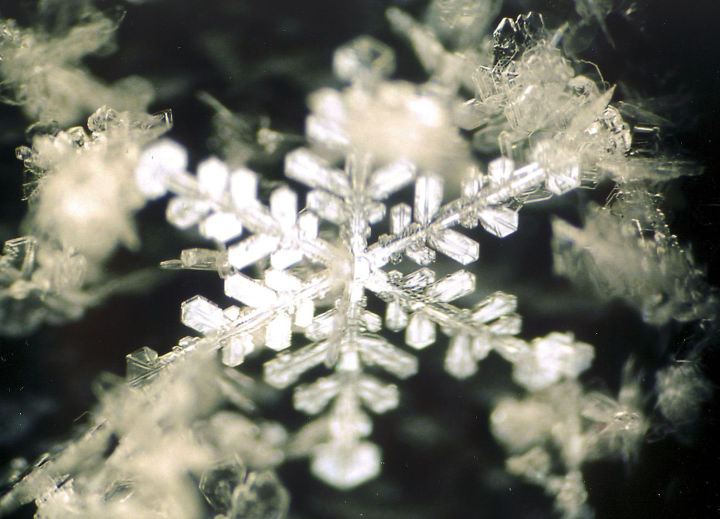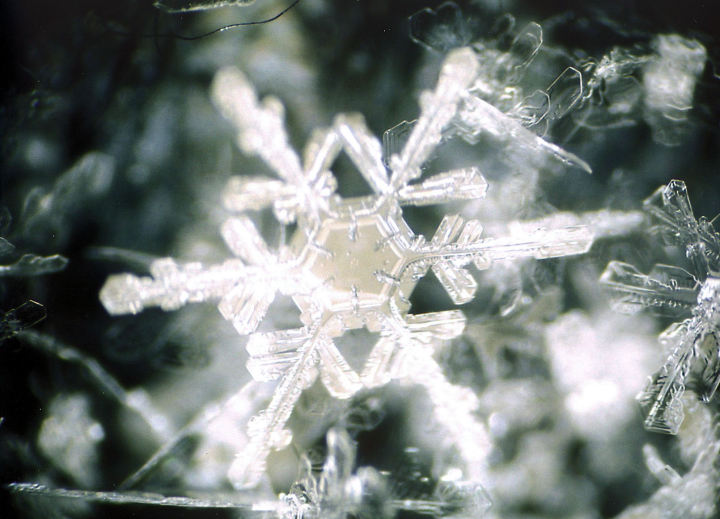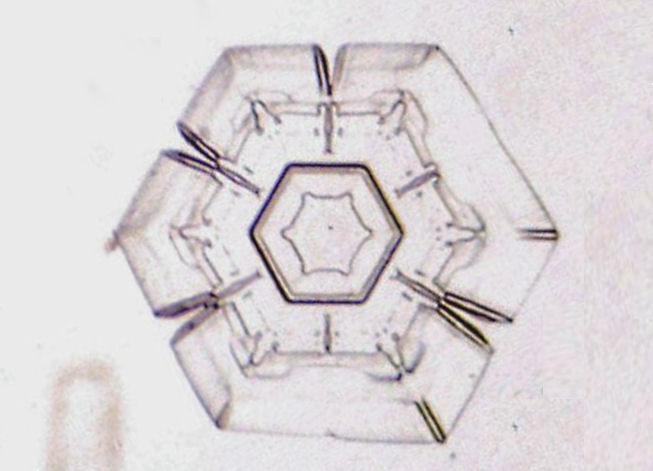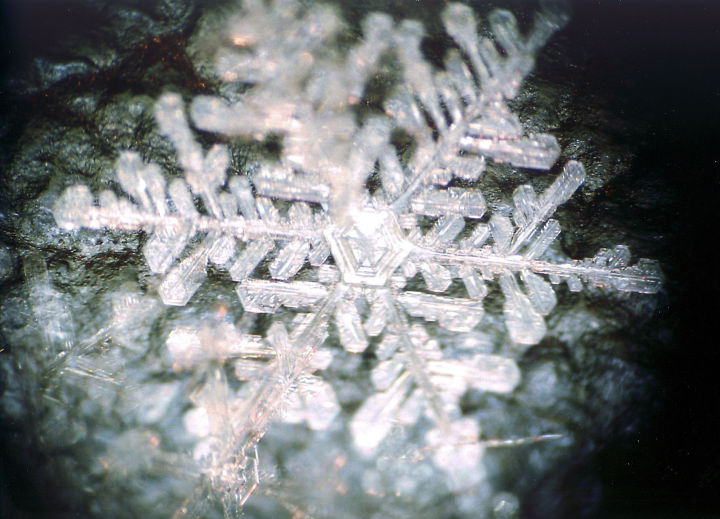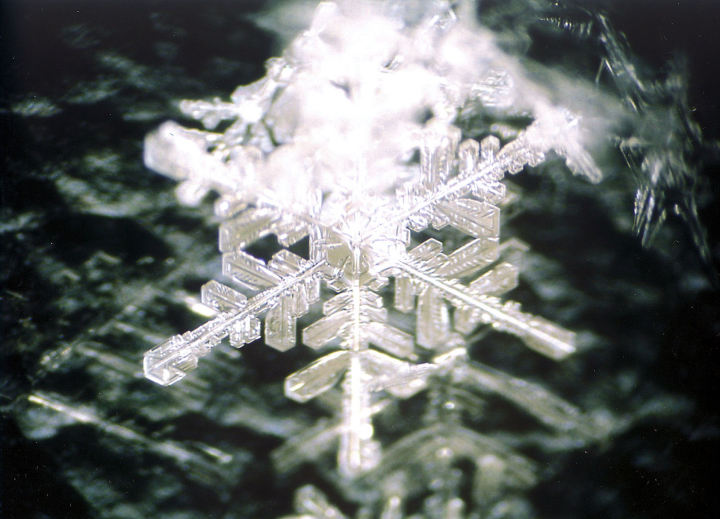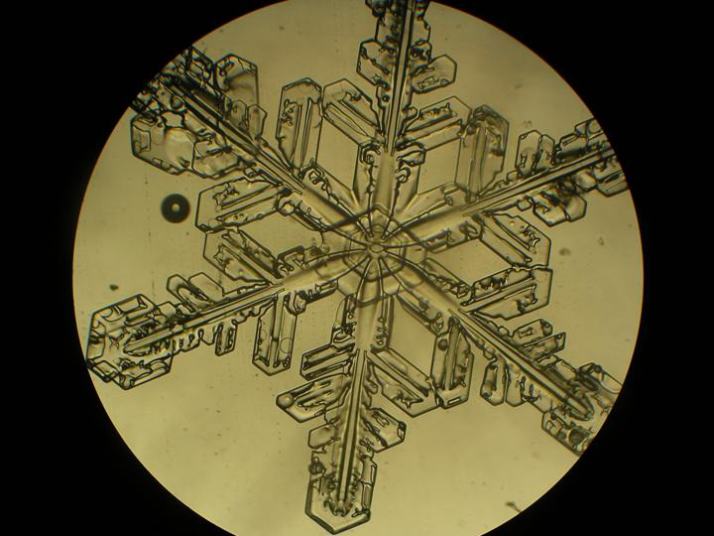Shining stars, Falling Crystals
Winter monsoon and snow clouds
The winter monsoon accumulates moisture over the Sea of Japan and blows toward the Japanese islands, accompanied by snow clouds. Therefore, in Hokkaido in winter, thick snow clouds arrive daily in the area west of the Daisetsuzan Mountains, which is a spinal mountain range, and snow will fall.
Thus, when the winter monsoon becomes stronger and we hear the winter pressure pattern in the weather forecast, the season for observing snow crystals finally begins.
However, when repeatedly observing snow crystals, I find that a clear day without a single cloud is a better opportunity to observe beautiful crystals than when there is a lot of snow falling from thick snow clouds.
Observing snow crystals at night is more convenient due to the cooler temperatures, but on particularly cold, clear nights, I may encounter a situation where large, well-developed regular hexapods are falling.
At that time, when I look up and see countless (and large) snow crystals falling one after another from the sky amidst the shining winter constellations, it looks as if snow crystals are springing up from nothing in the air, which is very mysterious. The snow crystals that fall are so large that they reflect light on the snow surface and sparkle. The scene is so fantastic that it looks as if the entire surface is covered with fine pieces of glass.
Dendritic crystals observed under the starlight sky (photographs of replica, transmitted light)
Shining stars, falling crystals
Such snowfall is often seen in January and February during the severe winter season. There are times when it can be seen every night near the Daisetsuzan Mountains, which are strongly affected by the winter monsoon, but even in areas on the Pacific side of Hokkaido (East area of Hokkaido), where snowfall is relatively rare, it sometimes falls late at night when it is severely cold.
I do not know the detailed reason for the occasional sightings, whether they are caused by wind-driven snow crystals from some snow cloud, or whether they are related to the cooler temperatures at night. However, snow crystals that fall without clouds because it is carried by the wind seem to be called “Kazahana (windflower)” in Japan.
In any case, when snow crystals fall under the shining stars, I can observe beautifully grown crystals that are so large that I can see their detailed shapes with the naked eye.
The dendritic crystals which grew up greatly
“How big can snow crystals be?” ... I decided to find out by actual observation.
Since dendritic crystals can become entangled while falling, it is difficult to observe them as single crystals. Therefore, after catching the falling snow by holding out a reasonable board, we had to pick out single crystals from among them or pick up a single crystal by holding a brush in each hand and untangling the intertwined branches, being very careful not to break the crystals.
After taking pictures of the snow crystals, we make replicas of them and store them. When we find particularly large crystals, we try to make replicas and store them immediately, without taking pictures. This is because if the wind blows the snow crystals away during the work, there will be no replica even though there is a photograph.
The largest of the dendritic crystals preserved in this way is shown below. The largest crystal I have been able to identify so far is 7.5 mm between the ends of the branches.
Snow replica of the biggest one
Snow crystals under the microscope
Snow crystals, like ice, are colorless and transparent, so when they are observed under a microscope, they are usually observed using transmitted light. When we observe crystals through transmitted light, we can see not only their external shape but also the surface pattern and internal structure of the crystal due to the irregularities of the crystal surface. Sometimes, beautiful symmetrical shapes can be seen in the small side branches and surface patterns, and the center of the crystal may have a very detailed structure.
On the other hand, when we observe snow crystals in reflected light, we cannot see such detailed structures, but we can see the crystals shining in the reflected light. The image of snow crystals seen outdoors in winter seems to be rather similar to that observed with reflected light, because of their distinctive outline and impressive whiteness. Some of those pictures are shown below.
The best way to observe snow crystals depends on the purpose. Note that when Dr. Nakatani and others took photographs of snow crystals, they mainly used slightly oblique transmitted light in order to capture the unevenness of the crystal surface.
It should be noted that W. Bentley, a famous snow photographer, produced photographs of crystals taken with transmitted light, in which the crystals appear brightly on a black background, to compensate for the clarity of the crystal shape and the naturalness of the photographed image. Various methods of observing (photographing) snow crystals have since been devised, however, even with a simple microscope, simply picking up a crystal and observing it is enough to recognize its beautiful appearance.
The power of magnifying snow crystals and seeing them with own eyes is truly amazing and impressive. It seems to me that photographs can only convey a part of the beauty of a snow crystal, no matter how ingenious we may try to do so.
Snow crystals observed in transmitted light (left) and processed using Bentley's method (right)
Snow crystals observed in reflected light
For photographing snow crystals, I used a stereo microscope, as shown at right. The microscope came with a small incandescent light source, but I did not use it when observing snow crystals. This was because the stage would get hot and the crystals would melt if I continued to observe them.
Instead, a white diode is attached to the microscope, or a fluorescent light is placed near the top for illumination. Please see page 8 on this site for photographs, stereographs, and image movies of snow crystals. The 3D structure of snow crystals is introduced there.
